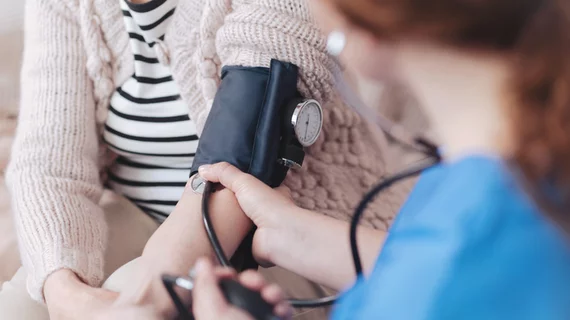How patient positioning during blood pressure measurements impacts accuracy
Some commonly used methods for taking blood pressure (BP) measurements are associated with significant errors, according to new data published in JAMA Internal Medicine.[1] This creates a high risk of patients being misdiagnosed and receiving treatments they do not really require.
The study’s authors noted that clinical practice guidelines are clear about how BP should be measured. Once the appropriate cuff size has been selected, it is important to confirm that the patient’s back is supported, their feet are both flat on the floor, their legs are uncrossed and the cuff is positioned at heart level with support from a desk or table.
These guidelines are not always followed, however, creating a risk of inaccurate measurements that could have a long-term impact on the patient’s health.
“Few studies have rigorously evaluated the effects of arm position on BP,” wrote corresponding author Tammy M. Brady, MD, PhD, with the department of pediatrics at Johns Hopkins University School of Medicine, and colleagues. “Previous studies documenting statistically significant BP overestimation when the arm is unsupported or is positioned with the BP cuff lower than heart level were limited by suboptimal design.”
To gain a better understanding of how technique can impact BP measurements, Brady et al. compared three different seated positions commonly used by healthcare providers:
- Standard positioning
- Standard positioning, except the arm is in the patient’s lap
- Standard positioning, except the arm is unsupported and hanging at the patient’s side
The study included 133 participants with a mean age of 57 years old. Fifty-three percent of participants were women, and 41% presented with a BMI of 30 or higher.
Participants were evaluated using each of the three positions, but the order was randomly selected.
Overall, the average systolic blood pressure (SBP) and diastolic blood pressure (DBP) measurements were 126/74 mm Hg for standard positioning. Those averages changed to 130/78 mm Hg when the arm was in the patient’s lap and 133/78 when the arm was hanging at the patient’s side.
Diving deeper into the data, the research team confirmed that the lap and side positions were associated with significantly higher BP readings than standard positioning. Using the patient’s lap for support led to SBP being overestimated by 3.9 mm Hg and DBP being overestimated by 4 mm Hg. Letting the arm hang down with no support led to SBP being overestimated by 6.5 mm Hg and DBP being overestimated by 4.4 mm Hg.
“Although the error in SBP with the arm supported in the lap was less striking in magnitude than when the arm was unsupported at the side (approximately 4 mm Hg vs. approximately 7 mm Hg), BP readings in either position were sufficiently high to raise concerns for overdiagnosis and overtreatment,” the authors wrote. “These findings were consistent, and also more extreme, among higher-risk groups.”
The group also emphasized how important proper techniques are when out-of-office measurements are required.
“Appropriate patient preparation and positioning prior to BP measurements, including using the appropriate arm position, is as important for home measurements as it is for measurements obtained in the clinic,” they concluded. “Therefore, education and training of both clinical staff and patients regarding BP measurement is essential for hypertension control and cardiovascular disease prevention.”
Click here to read the full analysis.

